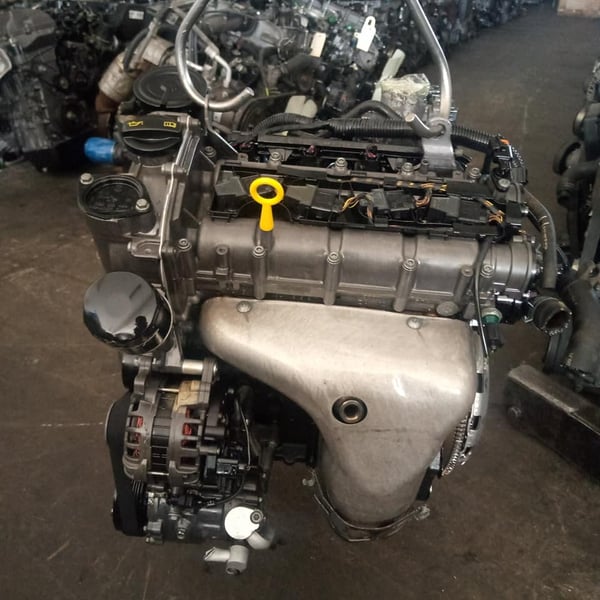Find a high-efficiency clp engine for your equipment.
Find a high-efficiency clp engine for your equipment.
Blog Article
The Duty of a Clp Engine in Revolutionizing Engine Efficiency and Sustainability
The arrival of CLP engine technology presents a pivotal minute in the vehicle sector, where efficiency and sustainability assemble in unmatched methods. By enhancing combustion processes and allowing for dynamic adjustments in compression proportions, these engines not just guarantee boosted fuel efficiency and reduced emissions yet also challenge standard engineering paradigms.
Recognizing CLP Engine Modern Technology
As the automotive sector consistently looks for cutting-edge options to boost efficiency and performance, understanding CLP engine modern technology becomes crucial. The term CLP means Compression-Low Stress, an innovative engine design that concentrates on enhancing combustion processes and decreasing discharges. This innovation operates by keeping a low-pressure environment within the combustion chamber, which helps with an extra complete gas shed and lessens unburned hydrocarbons.
One of the essential attributes of CLP engine innovation is its ability to adjust the compression ratio dynamically. This versatility allows the engine to run successfully throughout various driving problems, boosting gas economic situation while concurrently improving power result. In addition, CLP engines leverage advanced materials and layout concepts to lower weight and thermal losses, better adding to overall performance.
In addition, the integration of digital control systems plays a vital function in managing the engine's efficiency parameters. These systems enable real-time modifications to ignition timing and gas injection, enhancing combustion for both power and efficiency. By understanding CLP engine innovation, stakeholders in the automobile field can much better appreciate its capacity in driving the future of engine design, efficiency, and sustainability.
Efficiency Enhancements Offered
CLP engine technology provides significant performance improvements that establish it apart from standard engine layouts. One of the primary advantages of CLP engines is their capacity to run efficiently across a more comprehensive variety of rates and lots. This versatility converts right into improved torque delivery and velocity, giving a more responsive driving experience.
Furthermore, the innovative combustion procedure made use of in CLP engines optimizes fuel-air mixing, causing higher thermal efficiency. This improvement not only makes best use of power output however additionally reduces energy loss, causing an engine that carries out much better under numerous conditions.
Moreover, the modular design of CLP engines allows for simpler assimilation with hybrid systems, enhancing their efficiency possibility - clp engine. This flexibility allows manufacturers to make automobiles that accommodate customer demands without compromising agility or power
The accuracy design entailed in CLP modern technology likewise contributes to lower friction and wear, boosting engine longevity and reducing the frequency of maintenance. Overall, these performance enhancements setting CLP engines as a leading selection in the pursuit of high-performance, dependable, and flexible engine solutions.
Environmental Benefits of CLP Engines
One of the most engaging advantages of CLP engines hinges on their ecological benefits, which are progressively crucial in today's automotive landscape. These engines are developed to enhance fuel performance, dramatically lowering carbon discharges compared to conventional combustion engines. By making use of innovative combustion methods and innovative materials, CLP engines promote cleaner exhaust outputs, adding to boosted air high quality.
Furthermore, the decrease in gas usage not only brings about reduce greenhouse gas discharges however also preserves useful natural deposits. As nonrenewable fuel source gets decrease, the shift in the direction of CLP modern technology stands for a calculated action in the direction of sustainability. The engines are usually compatible with alternate gas, even more boosting their ecological allure and permitting a varied energy portfolio.
In addition, the lightweight style of CLP engines helps lower vehicle weight, which in turn reduces the power needed for propulsion. This results in reduced functional energy usage and a lessened ecological footprint. In recap, CLP engines stand at the Learn More Here leading edge of initiatives to mitigate environment modification and promote lasting methods in the vehicle market, personifying a future where performance and environmental obligation are not mutually unique.
Contrast With Traditional Engines
While traditional engines have lengthy dominated the vehicle industry, the intro of CLP innovation offers a considerable shift in performance and effectiveness. Conventional inner burning engines primarily rely upon gas burning, which not only restricts thermal effectiveness however also adds to higher emissions. On the other hand, CLP engines employ sophisticated thermal management and an unique burning process, enhancing gas performance and dramatically minimizing greenhouse gas emissions.
Moreover, traditional engines operate set power contours, which can prevent efficiency in varying driving conditions. CLP engines, however, are designed Discover More Here to adapt their efficiency dynamically, supplying optimum power distribution based on real-time demands. This versatility brings about improved velocity, responsiveness, and total driving experience.
Maintenance likewise varies substantially; conventional engines often need constant oil changes and element substitutes as a result of image source deterioration. clp engine. CLP engines, with fewer relocating parts, guarantee minimized upkeep requirements and longer operational life-spans

Future Leads and Innovations
As the auto landscape advances, the future of engine innovation is progressively concentrated on innovations that boost efficiency and sustainability. The Clp engine, with its distinct architecture and functional performances, is poised to play a pivotal duty in this improvement. Future advancements may include developments in materials science, making it possible for the building and construction of lighter and a lot more durable parts, therefore reducing total lorry weight and improving fuel efficiency.
In addition, the combination of artificial knowledge and device understanding into engine management systems is anticipated to optimize performance dynamically, enabling real-time modifications based upon driving conditions. These technologies can additionally minimize discharges and improve energy application.
Additionally, research study right into alternative gas, consisting of hydrogen and biofuels, presents interesting opportunities for Clp engines, aligning performance with eco-friendly efforts. clp engine. As governing structures come to be more stringent, the adoption of such innovations will certainly be important in attaining sustainability goals without endangering power
Conclusion

Report this page